Autumn fruits
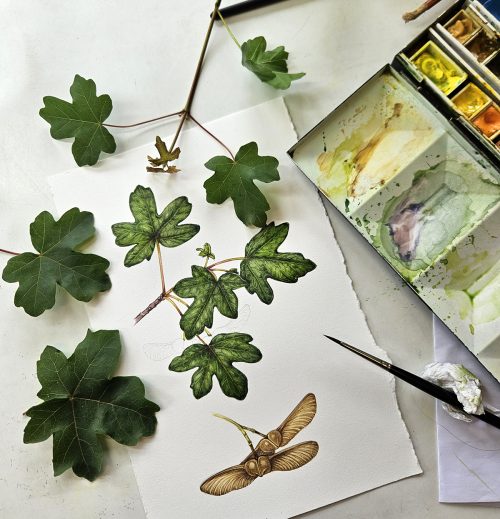
Autumn fruits is a recent project I’ve worked on with the Field Studies Council, (FSC). I’m lucky enough to do a lot of work with them, for their wonderful fold-our identification guides. I discussed working on a guide to coastal flowers a while back, this time let’s focus on autumn fruits and seeds. (The finished guide is now published and available to buy here.)
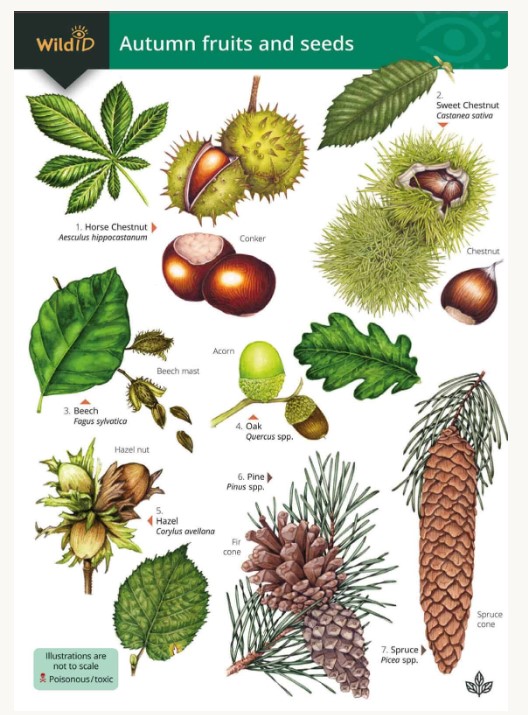
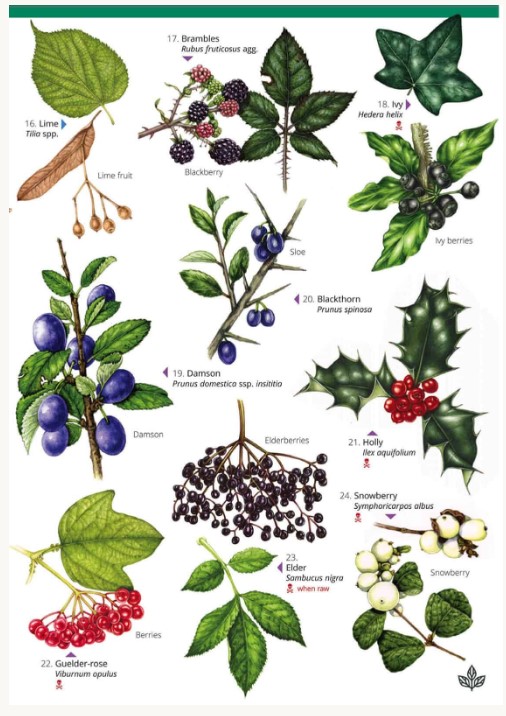
Completed Autumn fruits guide
Species to illustrate
As I had already completed some of the illustrations, I didn’t need to paint all 42 species featured. However, there were a lot that either needed doing fresh, required a new illustration, weren’t in full watercolour, or had to have more details provided. This gave me a healthy list of 18 illustrations to do. the Guelder rose below is fine, but is in pencil so could not be used on a full colour guide.
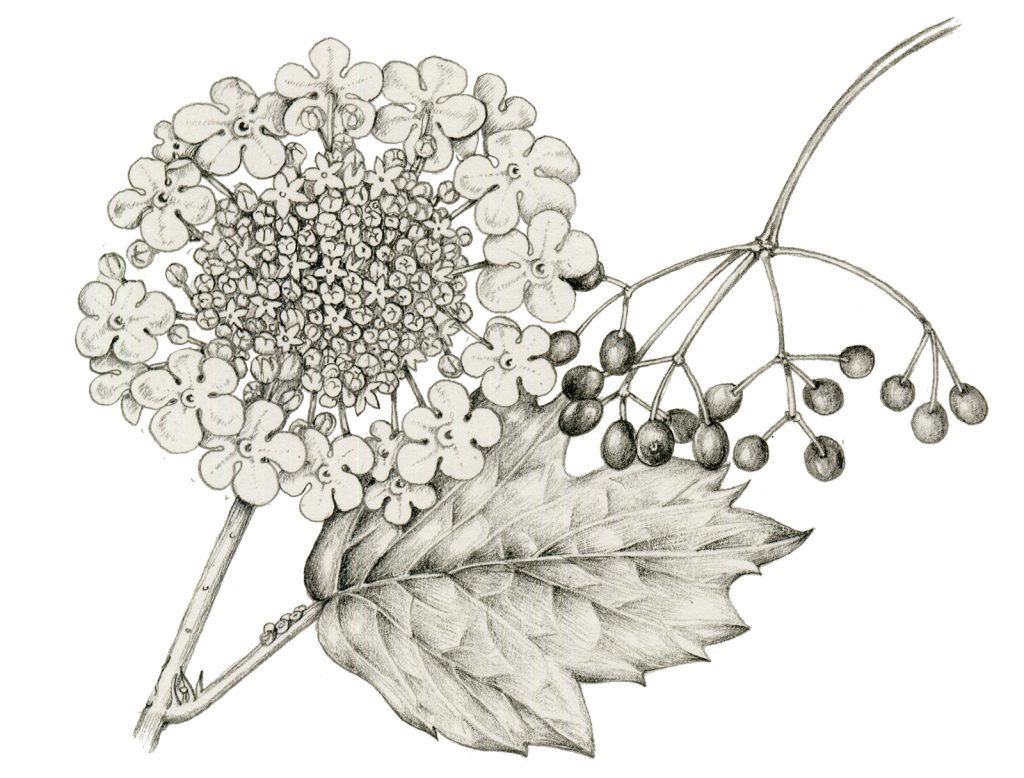
Autumn fruit in the spring
My main problem with this job was the timing. I was commissioned in January with all the illustrations needing completing by the end of April. There aren’t many fruits and berries around in springtime! However, there are plenty of pine cones, so I began by illustrating those. Literally, the low-hanging fruit. And the easiest of these was the Spruce.
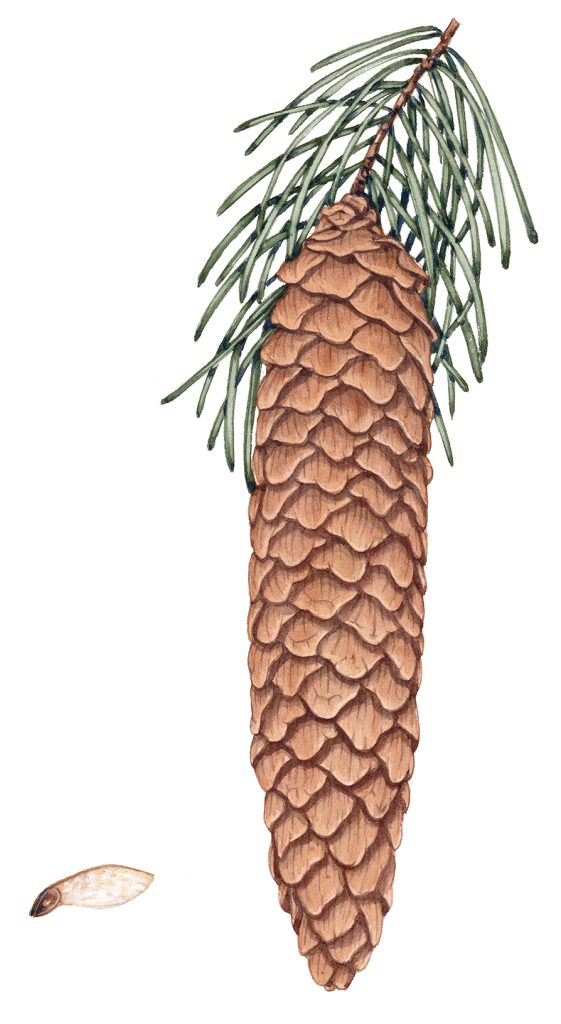
Norway spruce Picea abies cone
Working out of season is by no means unusual, and there is plenty of online reference. Websites such as Kew’s Online flora, Naturespot, iNaturalist, and old illustrations dating back centuries are invaluable. (It’s vital not to simply copy photos or illustrations, as this is infringing copyright and is also illegal). I refer to my sketchbooks. Many years ago I worked on some sketchbook tree sketches for a series of postage stamps. Species like the the Sweet chestnut, ash, and lime proved mighty helpful for this job.
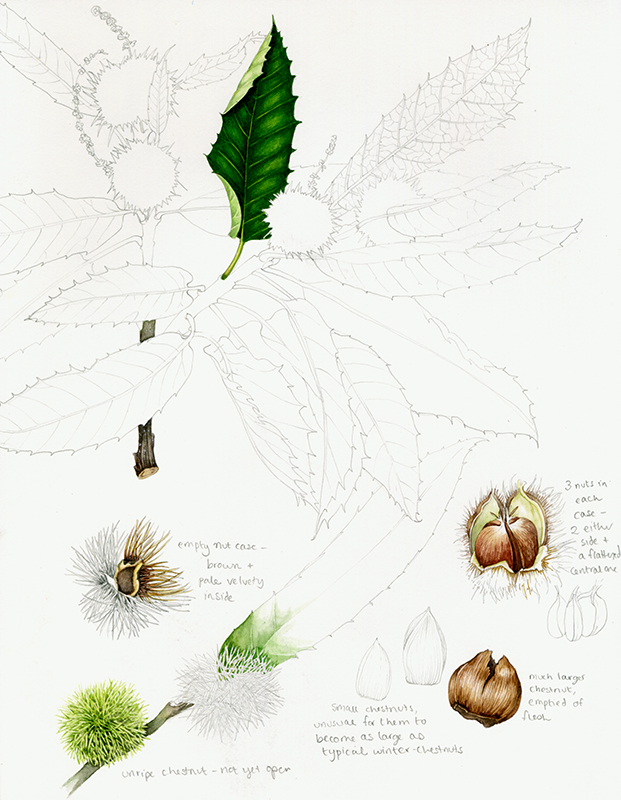
Sweet chestnut Castanea sativa sketchbook study
I also have boxes of stuff in the attic, including ash keys and conkers. Very handy.
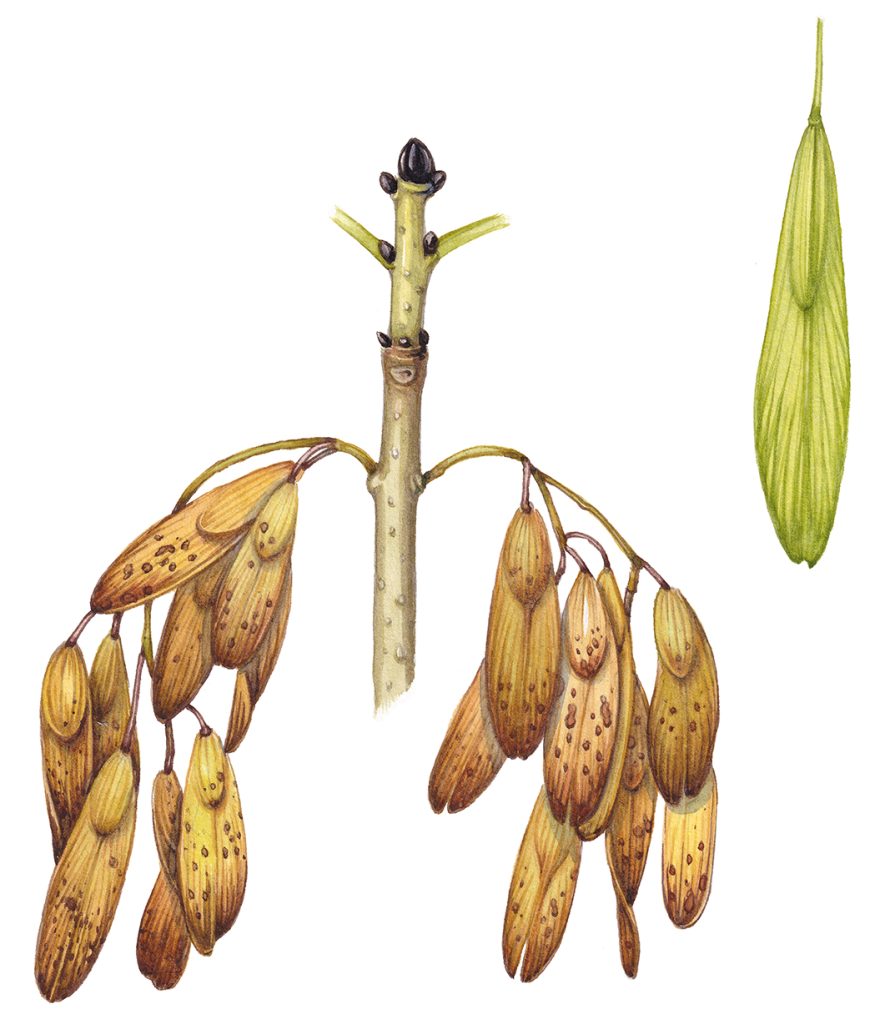
Ash Fraxinus excelsior keys
Leaves
As well as the fruit, leaves needing illustrating. This was much simpler, although I avoided choosing the freshest of leaves as they tend to be a brighter shade of green. There is almost nothing that gives me greater pleasure than spending a day illustrating a leaf from life.
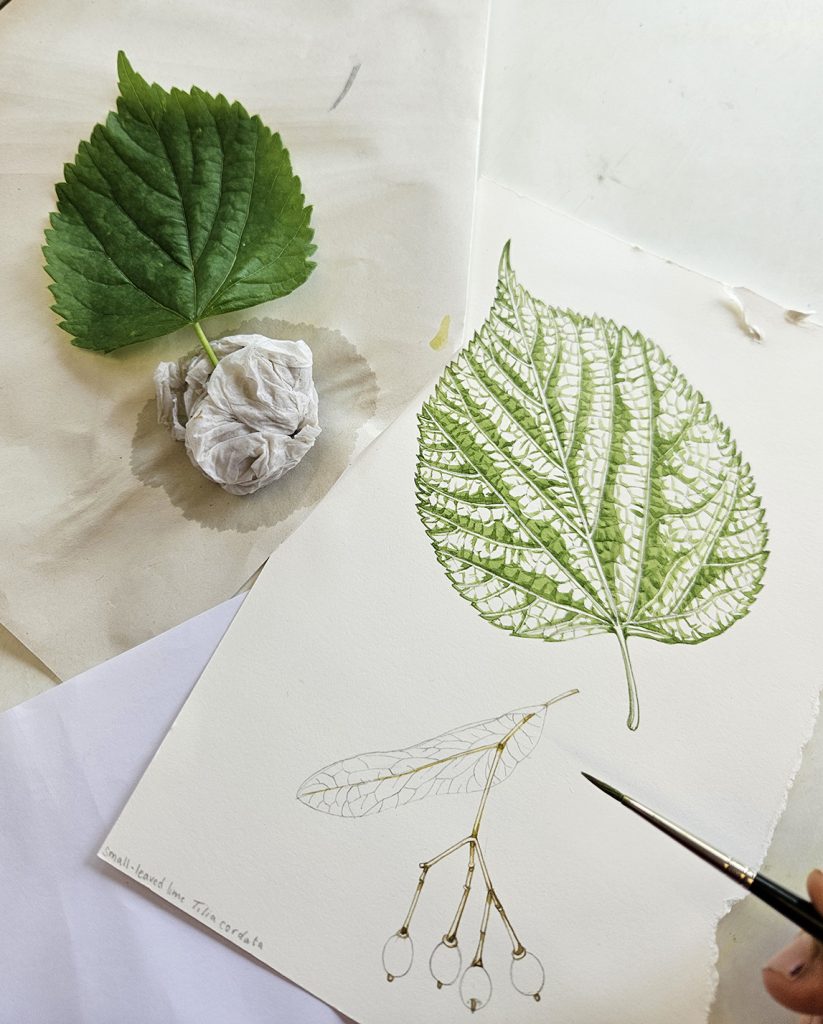
Small-leaved Lime leaf Tilia cordata illustration in progress
I got my hands on Field maple, Lime, Wych elm, Sweet chestnut, and Sycamore leaves. The Elm involved some acrobatic clambering, and it took me three or four days to find a local Sweet chestnut tree.

Sweet chestnut Castanea sativa illustration in progress
Challenges of illustrating autumn fruit: Horse chestnut
The trickiest species were those with unusual seed cases. The spines of the Horse-chestnut, combined with the need to capture that rich, shiny mahogany conker colour was a case in point. Having to figure out the geometry of the spines was key. Which ones pointed in what direction, and where would the shadows fall? Much easier if you have a conker case in hand. (For more on this, see my blog on working from photo reference). Because I couldn’t be totally certain of the play of light and shadows, I kept them muted which always reduces the impact of an illustration.
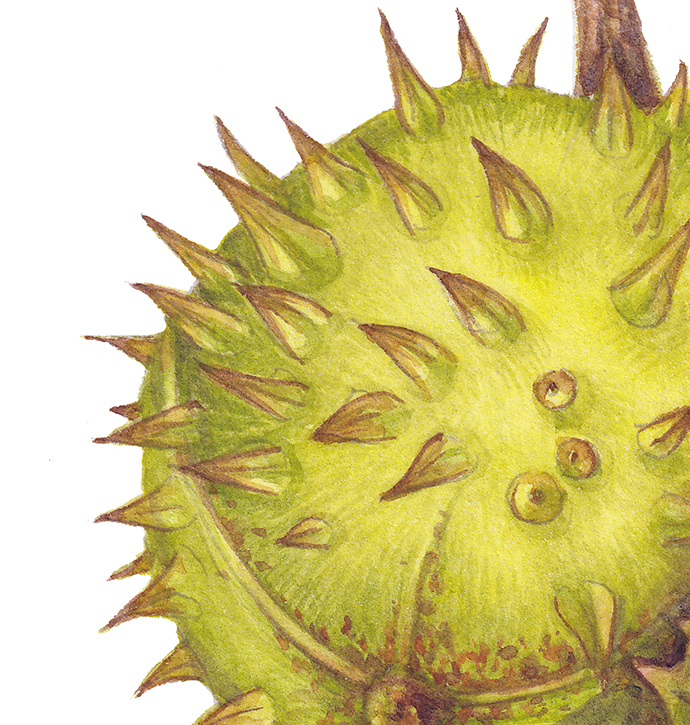
Horse chestnut Aesculus hippocastanum
The conkers themselves were easier, once I decided how to approach them. Laying down lines which were then topped with concentric circles of paler colours proved to be a satisfactory approach.

Horse chestnut Aesculus hippocastanum conkers
The final illustration is something I’m pleased with, especially considering the bits of it that I invented!
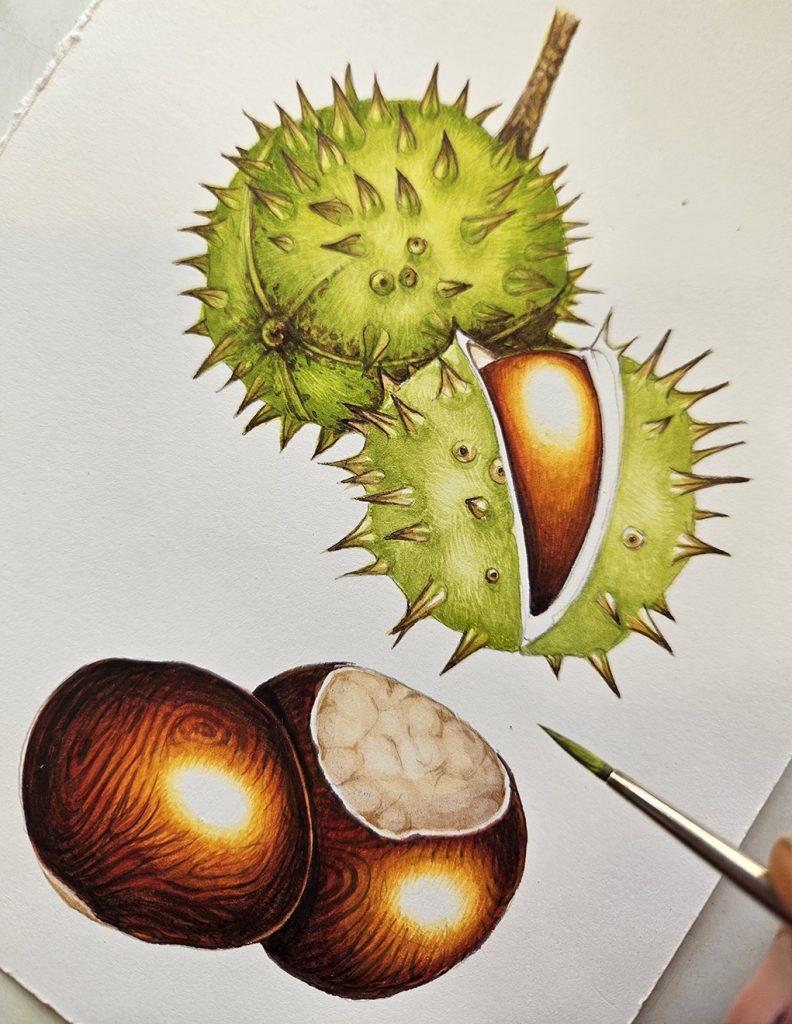
Horse chestnut conker completed
Challenges of illustrating autumn fruit: Spindle
The spindle is a thoroughly extraordinary tree. Its’ leaves go an astonishing shade in autumn, and the fruit are bright orange within hot pink seed cases. Sadly, this is a species I had not got a sketchbook study for, so I was working from an amalgamation of about 30 different photos and old engravings.
The geometry was a challenge, figuring out how the berries were held by the pods. But it was the colours that were hardest to capture, as they varied a great deal between photographs.
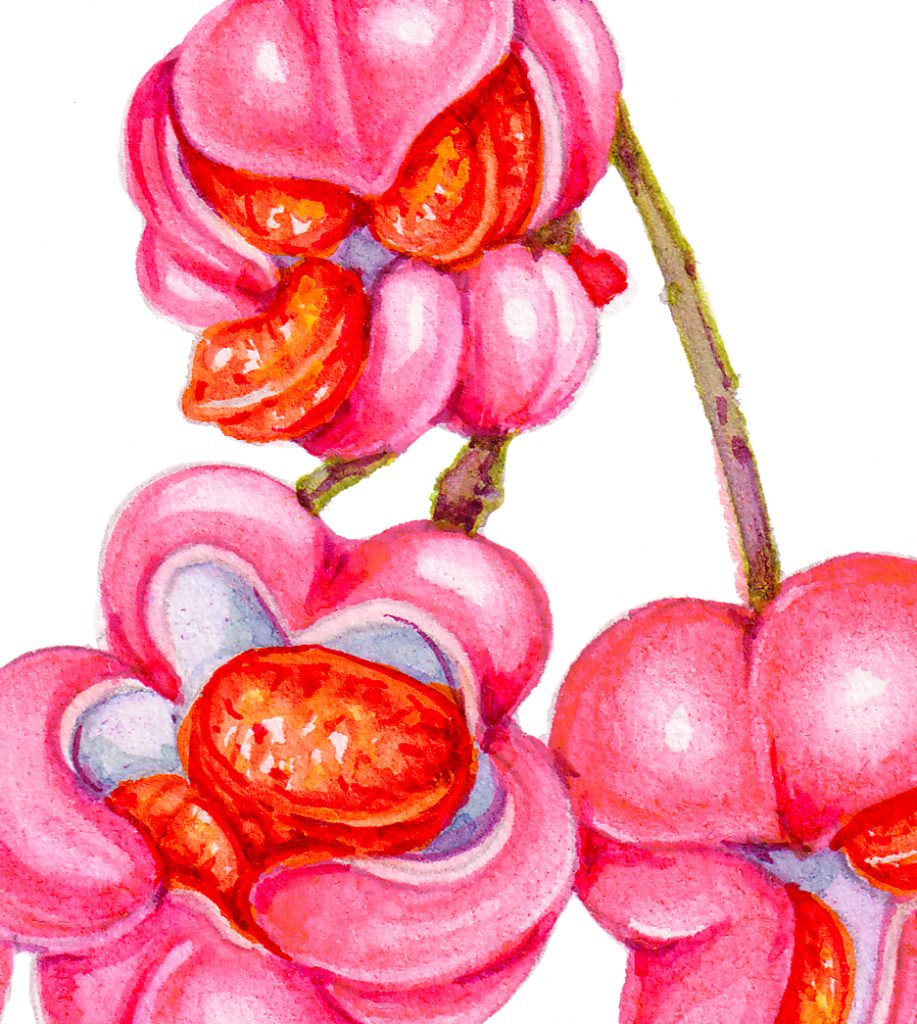
Spindle Euonymus europaeus berries detail
Some of the reference showed the leaves as a rich crimson, others seemed to suggest they were bright orange, or hot pink. Obviously, leaf colour varies from plant to plant and leaf to leaf. But finding a happy medium here was tough! I ended up giving details of venation in reds and pinks and uniting the leaf with an orange top wash.

Spindle Euonymus europaeus leaf detail
I must have done something right, the original illustration has been sold and now graces a wall in London.
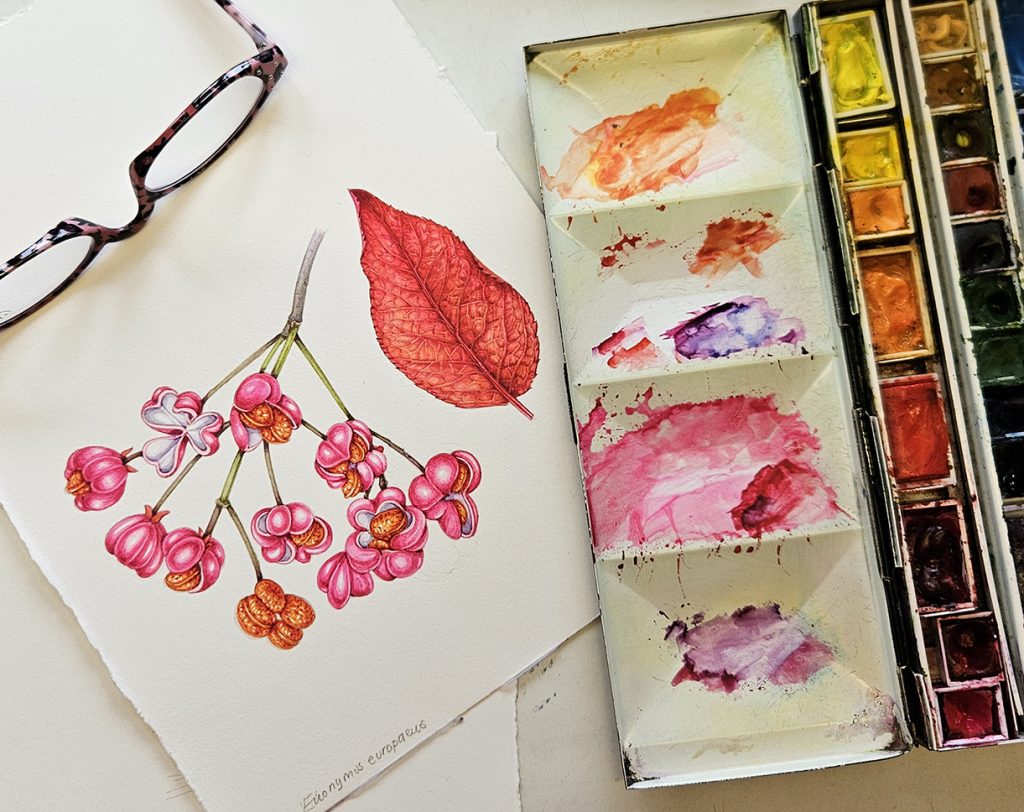
Completed illustration with my paint box
Challenges of illustrating autumn fruit: Sweet chestnut
I liked painting the leaf of the Sweet chestnut as I had my sketchbook to work from, and living leaves. I wish I could say the same for the seed case. Although I had a few old seed cases in the attic, they had all dried and turned brown years before. The geometry of the prickles is really hard to untangle, so I ended up working closely from photos. I worked from the outside in, then added depth to the shadows between the spines.
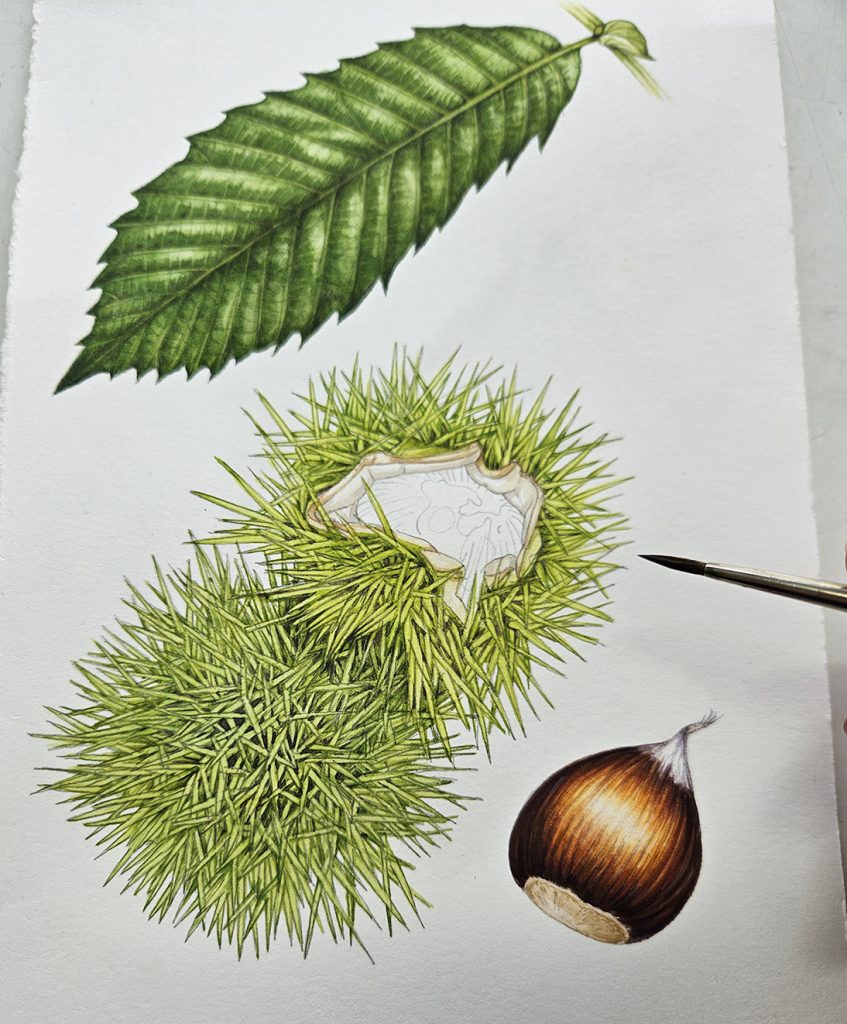
Sweet chestnut in progress
I found myself wishing that FSC had been able to use my pen and ink with top colour illustration, done a couple of years ago. The medium looks very different though, and they were right to ask for a new pure watercolour image.
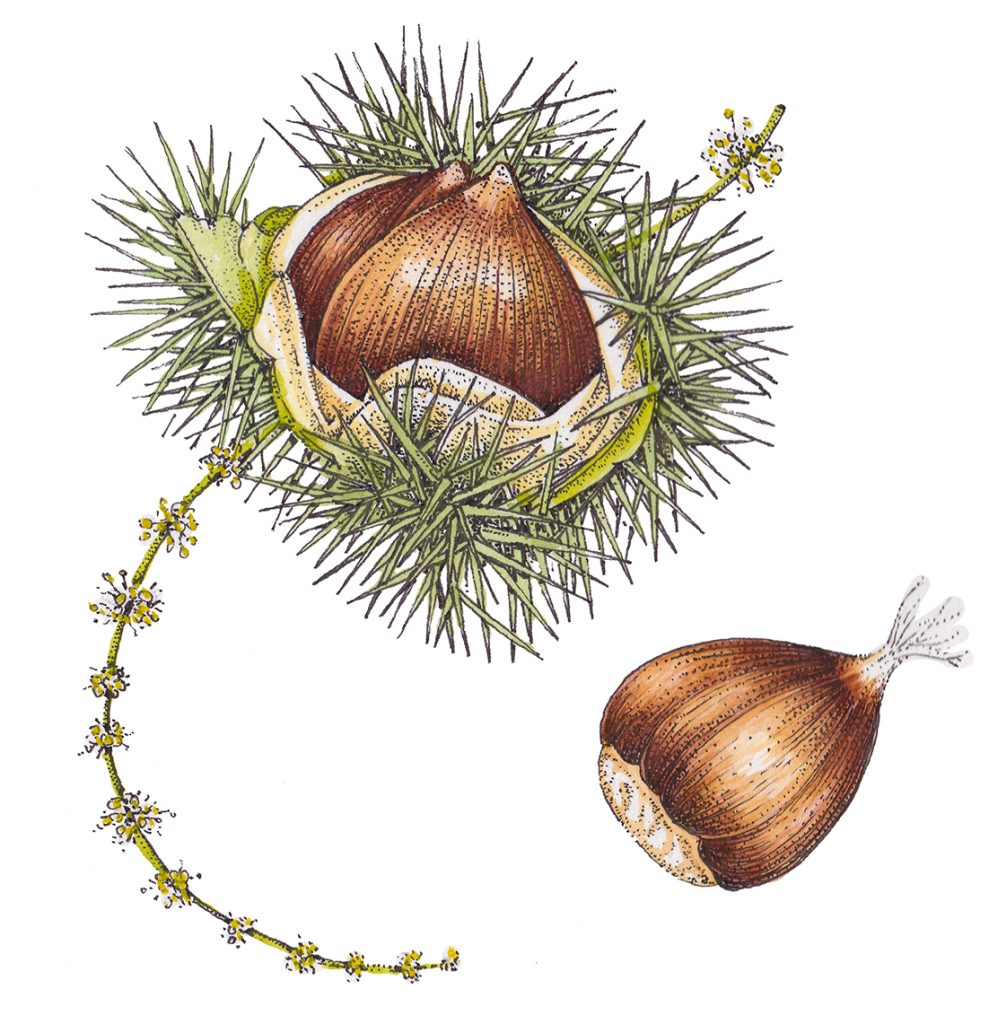
Sweet chestnut Castanea sativa pen and ink illustration
The chestnut itself was fine as I’ve got plenty of sketchbook notes on this. It is also a lot easier to capture than that nest of bright green prickles.
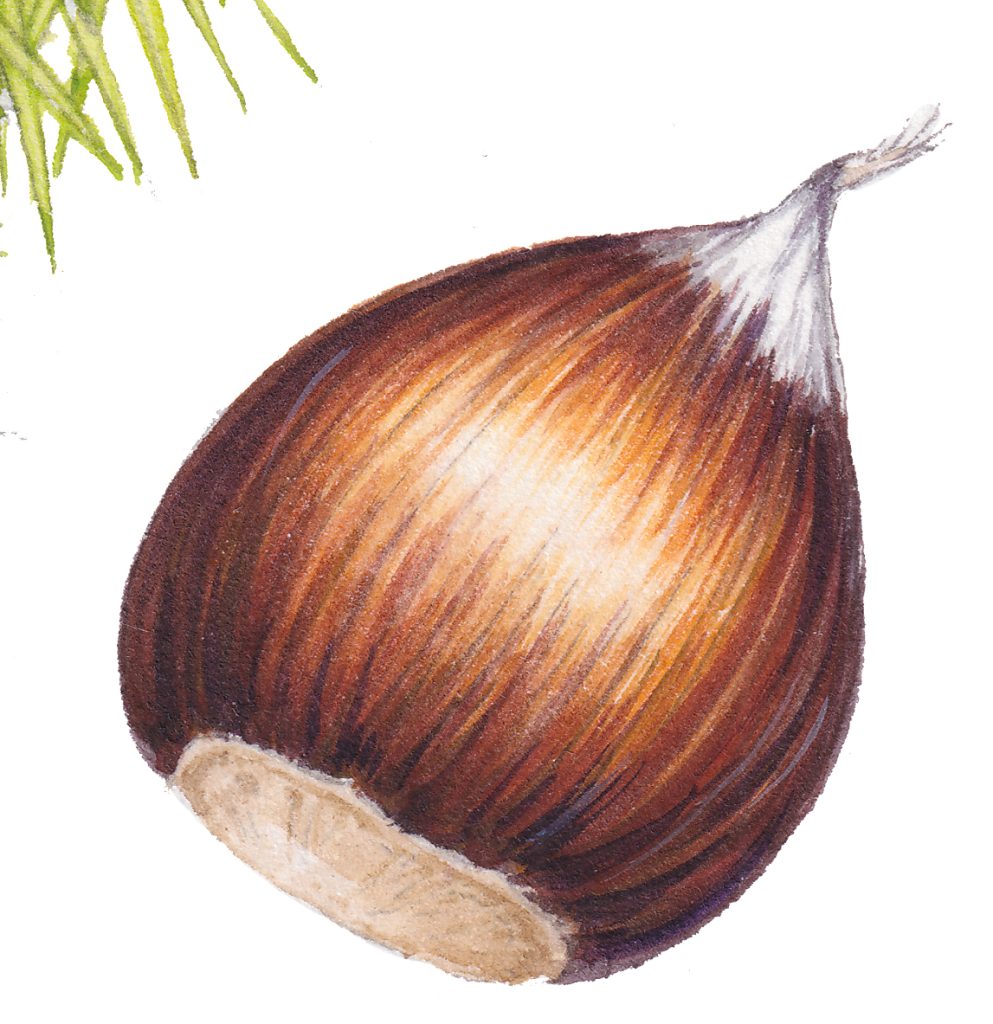
Sweet chestnut Castanea sativa
Easy species to illustrate: The Alder
Marvellously, some species hang onto their fruit. This is true of the Alder.
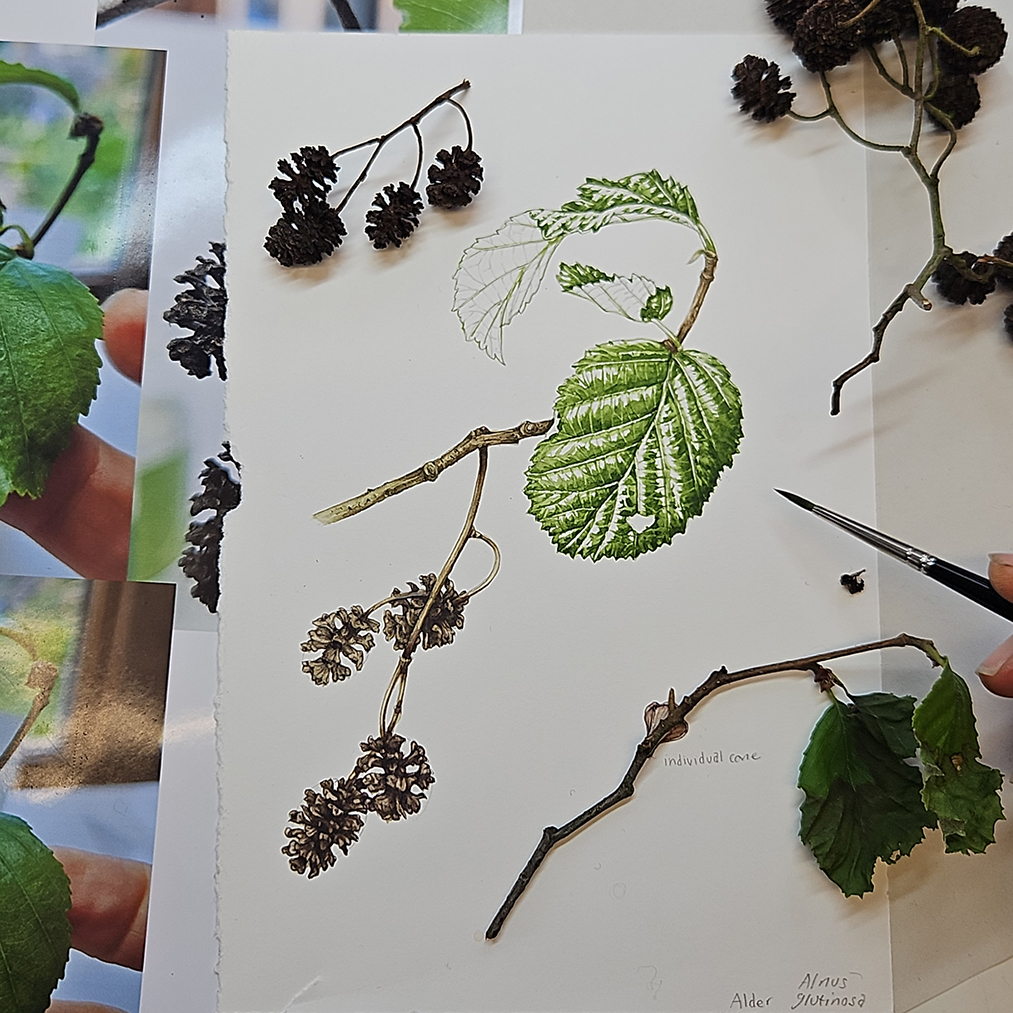
Alder illustration in progress
Yes, the woody cones have long since shed their seeds, but there they are, still in place on a branch. It was extremely easy to pick a few sprigs and work closely from life on this one.
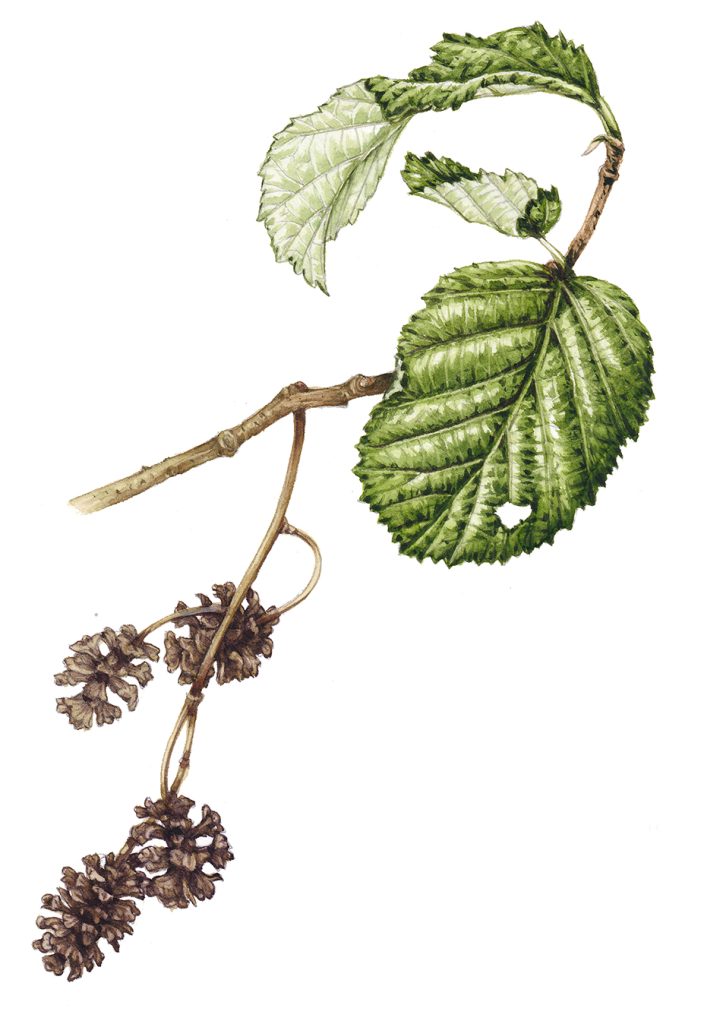
Alder Alder glutinosa
Easy species to illustrate: The Field maple
The field maple gave me everything. Not only were the leaves out in abundance, but for some reason a lot of the winged seeds were already pretty well developed. This made my job very simple, (although it did concern me in terms of climate change.) Field maple grow in hedgerows, so I could reach my reference without stretching and clambering up onto fence posts.
The pinky red flush on the stems and outermost edge of the young winged seeds is a real joy to paint.
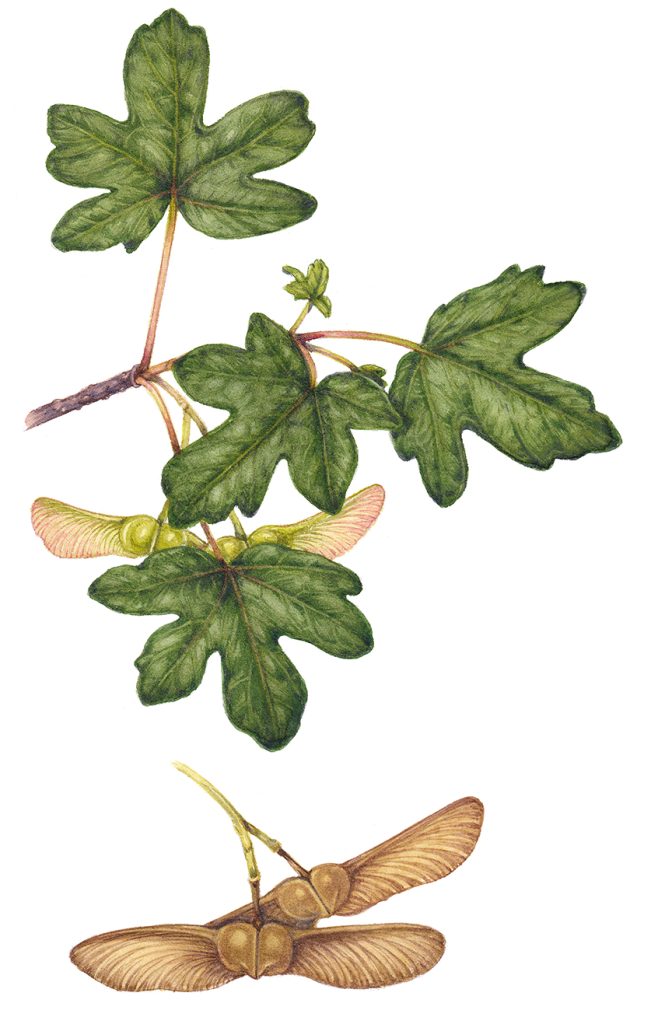
Field maple Acer campestre sprig
Easy species to illustrate: The Sycamore
I already had most of the elements of the Sycamore completed. All we needed was the seeds. The angle of the paired seeds is less horizontal than the Field maple, and this is one of the species specific traits that needed recording. I chose to illustrate a fresh pair of winged seeds, and a much older, dark brown seed. The latter has been sat on the windowsill in my studio for about three years, slowly degrading, so I was glad to finally get around to illustrating it.
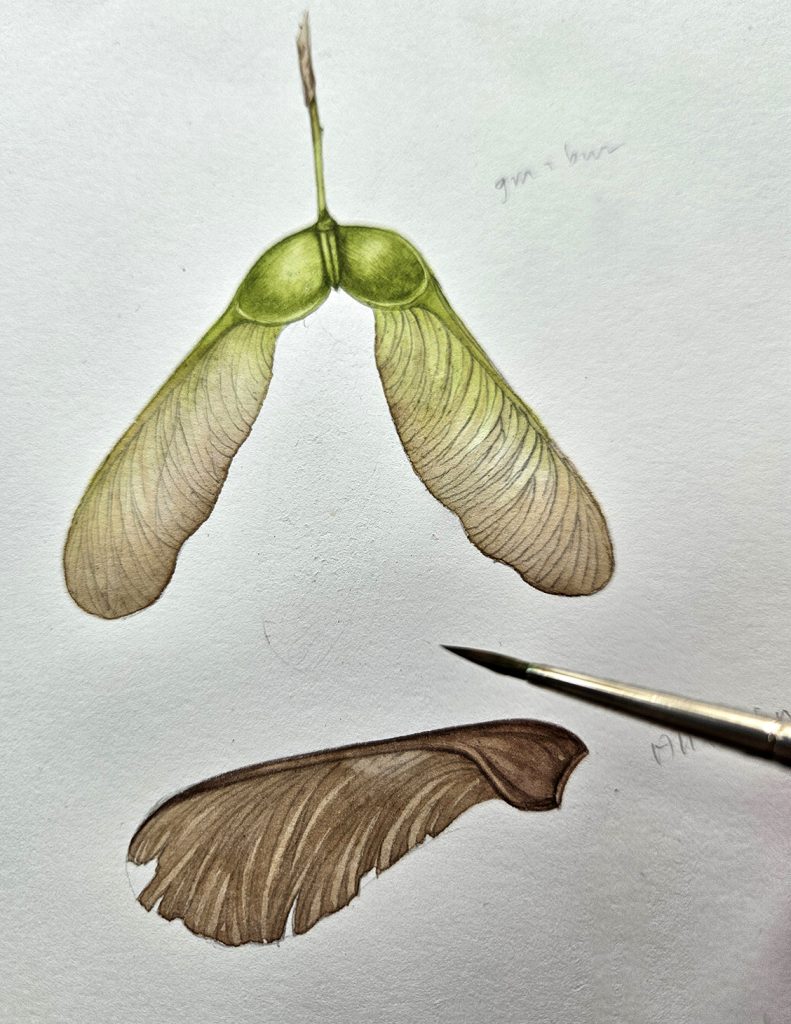
Sycamore Acer pseudoplatanus
This leaf was done for FOR Sweden last year. In Scandinavia, Sycamore is considered an invasive species. It was only introduced to Britain in the late 1500s. For more on Sycamore, look at my tree blog. There’s also a step by step blog explaining how to paint a leaf in autumn and an accompanying film, and another on illustrating a Sycamore tree. No wonder I didn’t find illustrating this species tough, it’s clearly one I’ve been drawing and studying for ages! I hadn’t even realised until I wrote this blog.
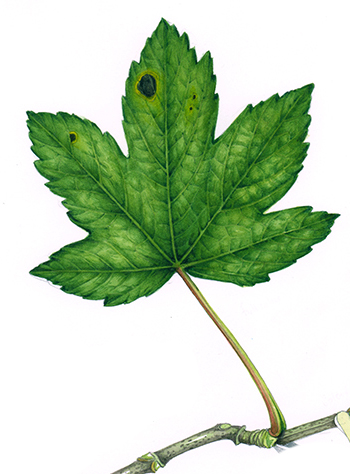
Sycamore leaf Acer pseudoplatanus
Easy species to illustrate: The Scots pine
In truth this was in no way easy. the easy part was having access to both the pine needles, past illustrations, and pine cones. The geometry of the pine cone is a thing of genius. Until you want to draw it. It’s all very well channelling your inner Fibonacci spiral, the fact that each facet of the cone projects outwards makes it a beastly subject to draw. There’s a good blog on the geometry of pine cones from Awkward Botany.
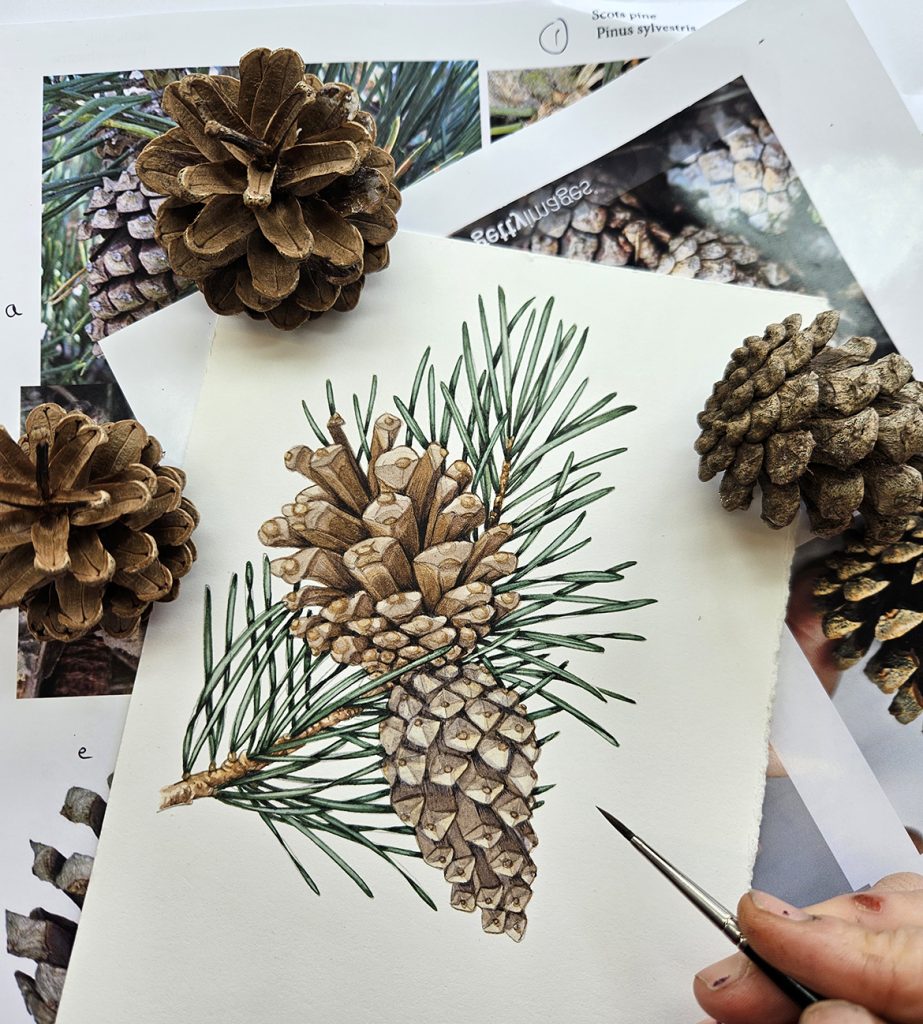
Scots pine Pinus sylvestris completed with cones, paintbrush, and reference
Below is a close up of the cones. I wanted to show how the scales open wider with age, releasing the seeds, and what a high level of variation there is between individual pine cones. For more on the Scot’s pine, check out my blog.
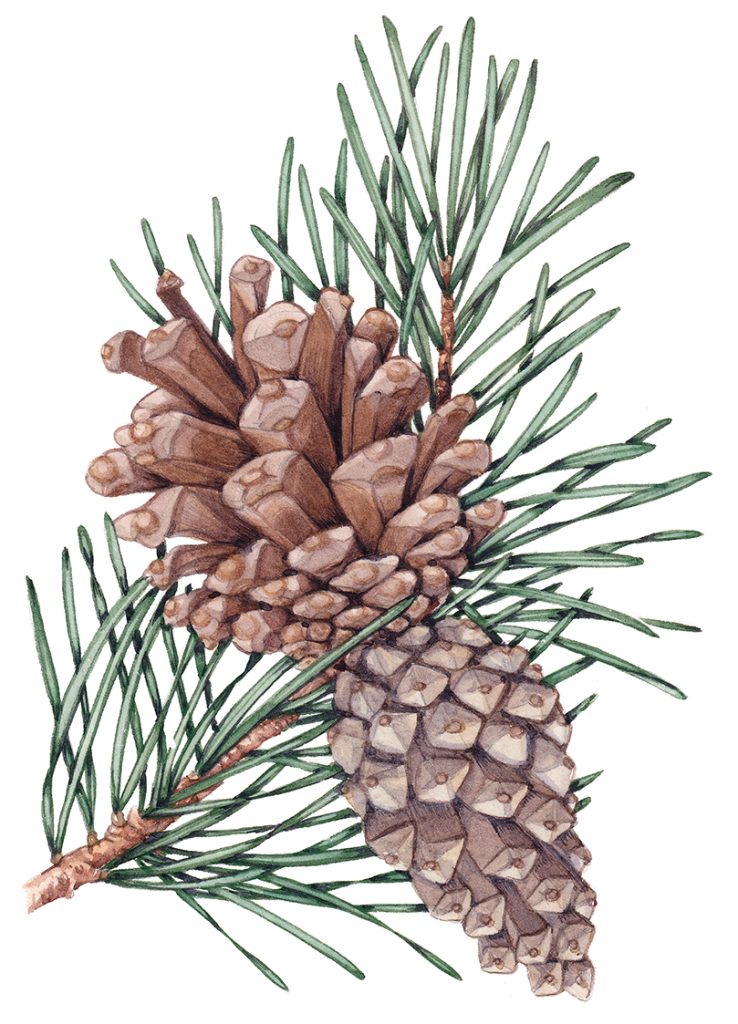
Scots pine Pinus sylvestris
My favourite Autumn fruit illustration: The Guelder rose
The most fun of all the illustrations was the Guelder rose. I had plenty of reference to work from and I know how to paint glossy red berries. I love capturing the shines and highlights. The green of the leaf is a bright colour, easier to work with than the blue green of a pine needle or muted green of a Field maple.
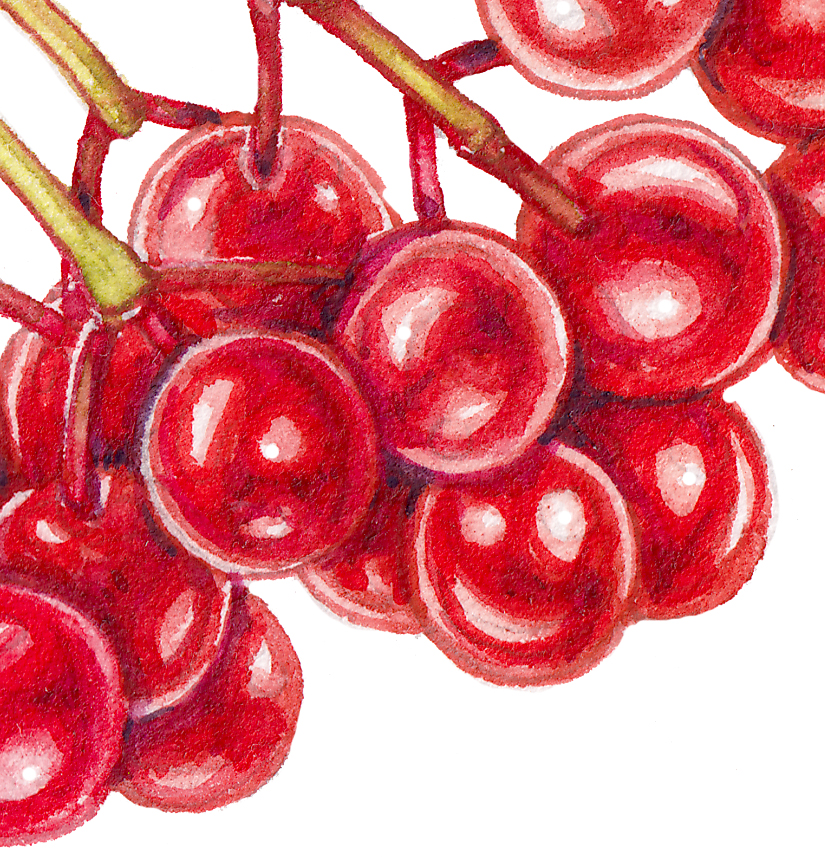
Detail of Guelder rose Viburnum opulus berries
I was also really pleased with the finished painting, which is never guaranteed.

Guelder rose Viburnum opulus leaf and fruit
Autumn Fruit: Conclusion
This was a great project to work on. Yes, had I been commissioned in autumn it would have been easier, but despite it being the wrong end of the year I still enjoyed it. I look forward to seeing the finished fold out guide over the next few months. And to not having to paint chestnut seed cases or pine cones again anytime soon!
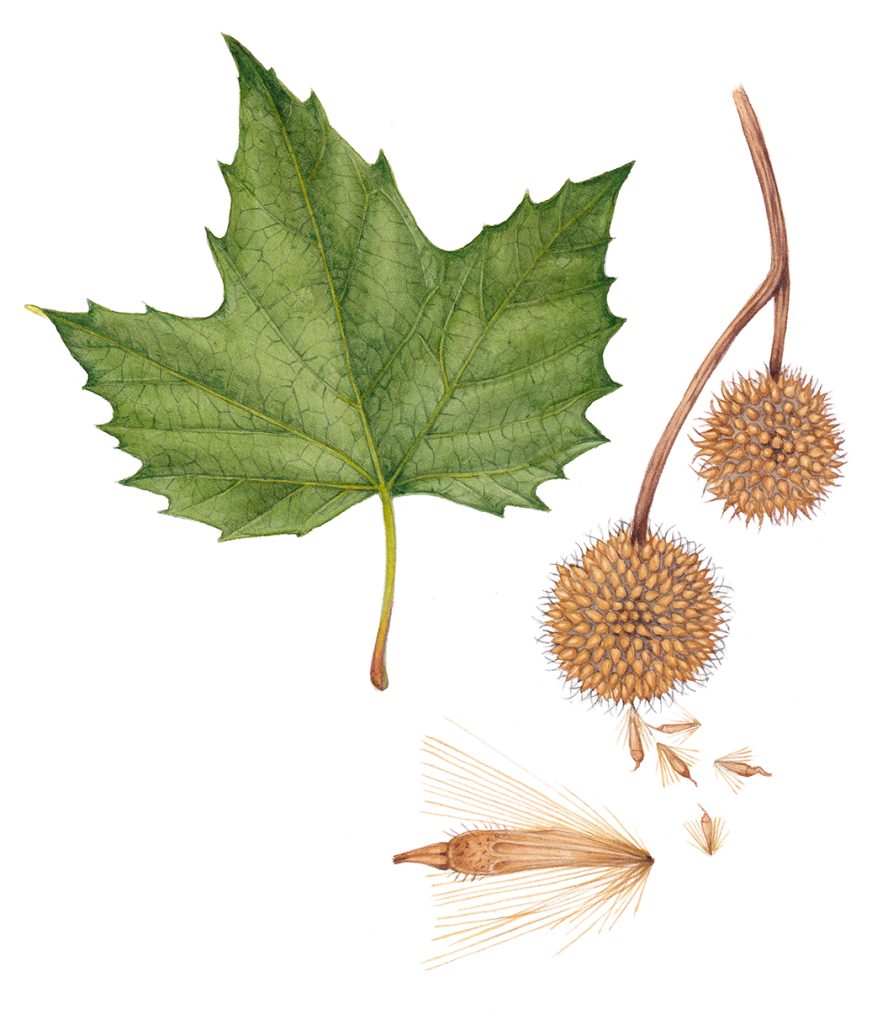
London plane Platanus × acerifolia leaf and seeds


…and here it is, the finished FSC Autumn fruits guide, available to buy direct from the FSC online shop.


Thanks to you, children can learn about different fruits while enhancing their fine motor skills and creativity. Thank you!